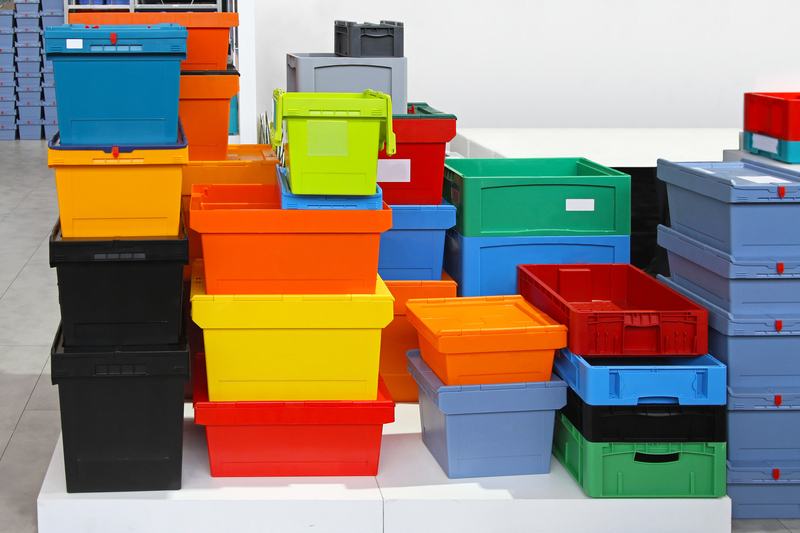Boosting Confidence: Lifting Heavy Items Solo
Lifting heavy objects alone is often a daunting task, especially for those new to the process or lacking confidence in their physical abilities. However, learning how to lift heavy items solo not only increases your physical strength but can also have a profound impact on your self-assurance and independence. In today's fast-paced world, knowing how to move bulky furniture, appliances, or boxes single-handedly is an invaluable skill for everyone--from homeowners and renters to office workers and fitness enthusiasts.
This comprehensive guide will take you through the important steps and strategies for boosting your confidence when lifting heavy items alone. You'll learn essential safety tips, proper lifting techniques, equipment recommendations, mental preparation tactics, and advice on maintaining health and preventing injuries. Let's empower you to tackle challenging tasks with skill and resilience!
Why You Might Need to Lift Heavy Items Alone
- Moving to a New Home: Sometimes helpers aren't available.
- Home Organization: Rearranging furniture or storage boxes solo.
- Work-Related Tasks: Stocking rooms, warehouses, or offices when understaffed.
- DIY Projects: Home improvement or garden work often requires moving equipment or materials by yourself.
- Fitness and Strength-Building: Improvising workouts with heavy household items.

Understanding the Psychological Barriers
For many people, the fear of injury or failure while lifting heavy objects alone generates anxiety and self-doubt. Common worries include:
- Concern over hurting your back or joints
- Fear of dropping and damaging valuables
- Embarrassment about not being strong enough
- Anxiety over not knowing the right technique
Tackling these fears head-on is a crucial part of boosting your confidence in solo lifting. With the right preparation and mindset, these worries can be alleviated and even transformed into stepping stones for personal growth.
Preparation: Setting the Stage for Success
1. Assess the Item and Your Limits
- Weight: Estimate if the object's weight is manageable for you. Most people can safely lift 20-50% of their bodyweight, but always err on the side of caution.
- Size and Shape: Bulky or awkward shapes may require different strategies or equipment even if the item isn't extremely heavy.
- Your Strength: Be honest about your capabilities. Never attempt to lift something that feels unsafe for you alone.
2. Clear Your Path and Plan the Move
- Remove tripping hazards, rugs, cables, or debris from the route.
- Make sure doors are open or held for you, and plan rest stops if needed.
- Keep essentials like gloves, lifting straps, and dollies nearby to help.
3. Warm-Up and Dress Appropriately
- Do a quick warm-up (dynamic stretching, walking) to prepare muscles and joints.
- Wear supportive, closed-toe shoes with good grip and comfortable clothing.
- Consider using gloves for grip and protection.
Mastering Proper Lifting Techniques for Confidence
One of the best ways to boost your confidence in lifting heavy items alone is by mastering safe and effective lifting techniques. This minimizes the risk of injury and ensures you are using your body efficiently.
Step-by-Step Guide to Safe Lifting
- Stand Close to the Object: Keep your feet shoulder-width apart for balance. Your toes should point at the item.
- Bend at Hips and Knees: Squat down (not just bending at the waist), keeping your back straight and chest pushed out. This engages your legs, not your back.
- Grip Firmly: Use both hands, ensuring a secure hold, and get under the item if possible.
- Lift with Your Legs: Push through your feet and use the strength of your legs to lift, not your back. Keep the object close to your body.
- Move Smoothly: Stand up slowly and avoid twisting or jerking motions.
- Change Direction with Your Feet: If you need to turn, pivot your feet instead of twisting your back.
- Lower Carefully: Use the same squat motion to set the item down safely.
Practice these steps with lighter loads to build skill and confidence before attempting heavier tasks solo.
Tools and Equipment: Making Lifting Easier
When you need to move heavy objects by yourself, proper tools can make a world of difference. Not only do they reduce strain on your body, but they also help you accomplish your task with greater safety and confidence.
Essential Equipment for Solo Heavy Lifting
- Lifting Straps: Distribute weight while improving your grip and leverage.
- Hand Trucks (Dollies): Ideal for moving appliances or stacks of boxes.
- Furniture Sliders: Allow you to slide heavy furniture across floors with minimal effort.
- Forearm Forklifts: Specialized straps designed for two people, but can sometimes be adapted for solo use with small loads.
- Back Belts: Offer extra lumbar support. *Note: They should not substitute for proper technique!*
- Gloves: Prevent blisters and improve your grip, especially on slippery or rough surfaces.
Investing in these items, or borrowing them if needed, not only makes lifting safer but also gives you mental reassurance that you can handle the challenge solo.
Techniques to Prevent Injury When Lifting Alone
- Know Your Limits: Don't attempt lifts that feel too heavy or awkward.
- Keep the Load Close: Holding heavy items away from your body increases strain on your back and arms.
- Don't Twist: Always move your feet to change direction.
- Take Breaks: For large or multiple lifts, pause and hydrate.
- Secure the Area: Keep pets, children, and obstacles clear.
- Use Your Core: Tighten your abdominal muscles to protect your spine.
If in doubt, seek help. No amount of confidence should override your safety.
Psychological Strategies for Building Confidence
While mastering physical skills is crucial, mental preparation and outlook also play a major role in lifting heavy things on your own. Here's how to use psychology to your advantage:
Visualization
- See Yourself Succeeding: Mental rehearsal improves performance and reduces anxiety.
- Visualize Each Step: Picture each motion, from gripping to lifting to moving and setting down the item.
Positive Self-Talk
- Replace "I can't" with "I can do this safely and confidently."
- Remind yourself of past successes, no matter how small.
Practice Mindfulness
- Focus on each movement and your breathing to avoid rushing or panic.
- *Stay present*: This reduces mistakes and sharpens your perception.
Build Up Gradually
- Start with smaller, more manageable lifts and celebrate your progress.
- Set achievable goals: "Today, I'll move this chair, tomorrow, the couch."
Real-Life Tips from Solo Lifters
Many people have built remarkable confidence and strength by learning to move heavy items alone. Here are some practical, actionable tips from seasoned solo lifters:
- "I always slide a towel or mat underneath furniture for easier movement."
- "Stacking boxes into smaller loads and taking more trips helps me avoid feeling overwhelmed."
- "When I need extra leverage, I use a sturdy broom handle or crowbar to edge an item up so I can get a hand underneath."
- "I never rush. Slow, deliberate movements keep me--and my belongings--safe."
Maintaining Health and Preventing Long-Term Issues
Regularly lifting heavy objects alone can improve your strength and self-confidence, but it's vital to care for your body and avoid chronic injuries.
Stretch Afterward
- Stretch your lower back, shoulders, and legs to aid recovery.
- Gentle yoga or foam-rolling can also help reduce stiffness.
Listen to Your Body
- If you feel persistent pain, stop and rest.
- Sharp or shooting pain is a red flag--never "push through" real pain!
Hydrate and Refuel
- Drink water post-lift and eat a small snack if you expended significant energy.

When to Ask for Help
True self-confidence includes recognizing your own *limits* and knowing when to call in assistance. Large appliances, specialty items (like pianos or safes), and particularly tricky spaces (tight stairways, uneven ground) usually require a partner or professional movers. Calling for help is not defeat--it's smart decision-making.
Conclusion: Lift with Confidence, Move with Purpose
Boosting confidence in lifting heavy items solo is a valuable life skill that builds character, strength, and independence. With the right preparation, technique, tools, and mental attitude, you can face such challenges safely and successfully. Remember: confidence follows competence. Start small, respect your body, and let each accomplishment fuel your belief in your ability to lift--and live--on your own terms.
If you've found these tips useful, share them with friends or family who may also benefit from solo heavy lifting guidance. Continue building your skills and confidence, and soon you'll be tackling ever-bigger challenges with ease!



